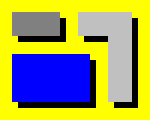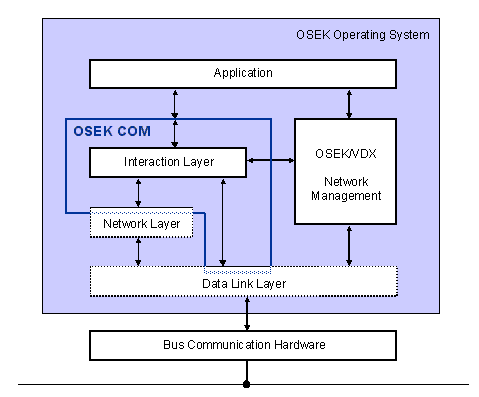

Homepage of OSEK/VDX
Requirements
OSEK COM offers services to transfer data between tasks and/or interrupt service routines. Different tasks may reside in one and the same ECU (internal communication) or in different ECUs (external communication). Access to OSEK COM services is only possible via the specified Application Program Interface (API).
It is the aim of the OSEK COM specification to support the portability, reusability and interoperability of application software. The API hides the differences between internal and external communication as well as different communication protocols, bus systems and networks.
This specification ensures that an OSEK COM implementation can run on many hardware platforms. The implementation shall require only a minimum of hardware resources, therefore different levels of functionality (conformance classes) are provided.
Services to support OSEK Indirect NM are provided. OSEK Direct NM has no requirements of OSEK COM.
The figure below shows the conceptual model of OSEK COM and its positioning within the OSEK architecture. This model is presented for better understanding, but does not imply a particular implementation of OSEK COM.

In this model, the OSEK COM scope covers partly or entirely the following layers:
The Interaction Layer (IL) provides the OSEK COM API which contains services for the transfer (send and receive operations) of messages. For external communication it uses services provided by the lower layers, whereas internal communication is handled entirely by the IL.
The Network Layer handles depending on the communication protocol used message segmentation/recombination and acknowledgement. It provides flow control mechanisms to enable the interfacing of communication peers featuring different levels of performance and capabilities. The Network Layer uses services provided by the Data Link Layer. OSEK COM does not specify the Network Layer; it merely defines minimum requirements for the Network Layer to support all features of the IL.
The Data Link Layer provides the upper layers with services for the unacknowledged transfer of individual data packets (frames) over a network. Additionally, it provides services for the NM. OSEK COM does not specify the Data Link Layer; it merely defines minimum requirements for the Data Link Layer to support all features of the IL.
Last Update: 29.07.04